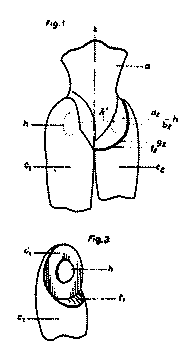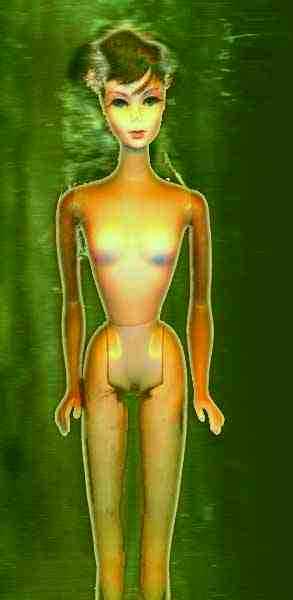The Facts of BarbieThere are certain things we all should know about Barbie history. When an icon carries this much weight in a society, it becomes so present, so commonplace that it becomes almost invisible, taken for granted. When this happens we have to dredge our collective memories, to see what awareness we can dislodge. In her book "Forever Barbie", M. G. Lord does just that, and the bodies of many repressed memories come floating to the surface. In this "biography" of Barbie, Lord finds many fascinating parallels between the development of Barbie, and the evolution of our culture. She explores Barbie as if the doll is the collective subconscious of America, which I think in many ways is true. Many of the following facts come from "Forever Barbie". Here are some high points from early Barbie history:
|

|

|
In 1945 Ruth and Elliot Handler form Mattel.
In 1957 Ruth conceives of a three dimensional adult-like doll. The body is based on German doll called "Lilli" which is sold as a sex toy for men. In 1958 the first Barbie dolls are manufactured in Japan. Barbie has her debut in winter 1959 at the American Toy Fair in NYC. The marketing of Barbie is driven by Ernest Dichter, director of the Institute for Motivational Research. A PhD who studied psychology at the University of Vienna, Dichter used Freudian analysis to bring a "scientific" approach to marketing. In 1963 "Sex and the Single Girl" is published. In 1967 the "Twist and Turn" Barbie is released, with swivel waist and hips. In 1971, with the "Malibu Barbie", Barbies eyes look straight ahead for the first time. Older Barbies eyes looked slightly down and to the side. In 1975, "Skipper", Barbie's sidekick, sprouts breasts. In 1979 Barbie gets a new accessory, the "Fur & Jewels Safe" with a security alarm. Just in time for the 80's. In 1980 Black Barbie is released. She is designed by Kitty Black Perkins, a black woman. Vanessa Williams becomes the first black Miss America in 1983. In 1984 Barbie is sold with the slogan "We girls can do anything". "Day-to-Night" Barbie comes with a briefcase, calculator, newspaper and business card. And Mattel releases "She-Ra, Princess of Power", promoted with the slogan "The fate of the world is in the hands of one beautiful girl". Also in 1984, Geraldine Ferraro makes a bid for Vice President of the United States. And finally in 1984 (busy year) Drexel Burnham Lambert supplies $231 million to Mattel. Michael Milken voices support for Barbie and Mattel, saying "I believe in Barbie."
And some facts of interest: Barbie is made from polyvinylchloride. If Barbie was human sized, she would stand 5 foot 6 inches tall, weigh 110 pounds, and have a 39 inch bust, 18 inch waist and 33 inch hips. She is named after Ruth and Elliot Handler's daughter. Ken is named after their son. "Plastic money", the credit card, came into use in 1958 with the invention of the American Express Card, the same year that plastic was used to mass produce Barbie. Mattel used a widespread new medium for selling Barbie: television. Through TV, Barbie could be marketed directly to children. Barbie is eleven and one half inches tall. In 1992 the average American girl owned 7 Barbies.
|
|
back to The Distorted Barbie contact napier@interport.net
|
|